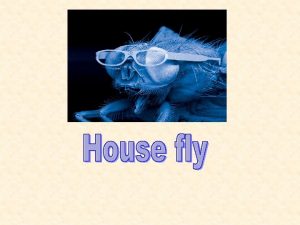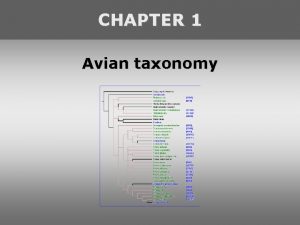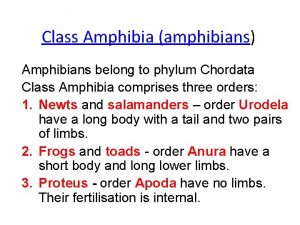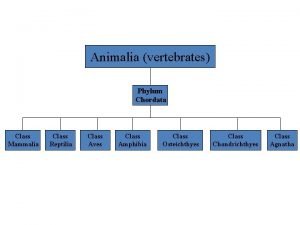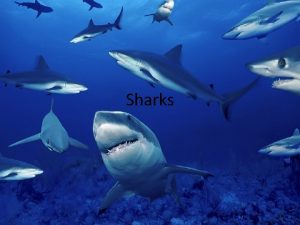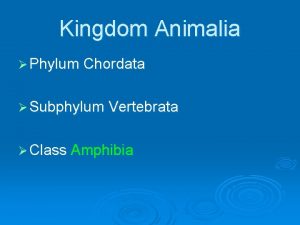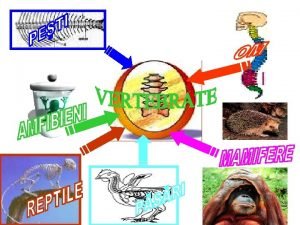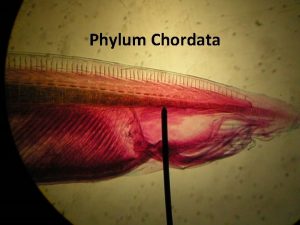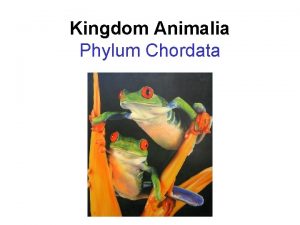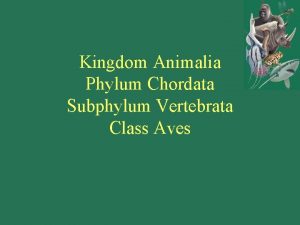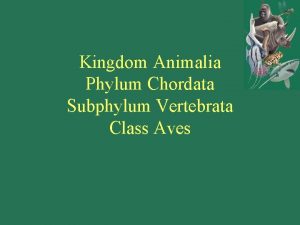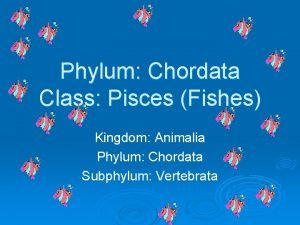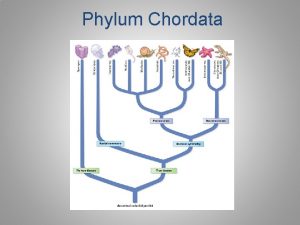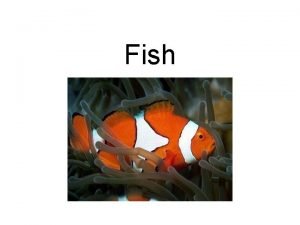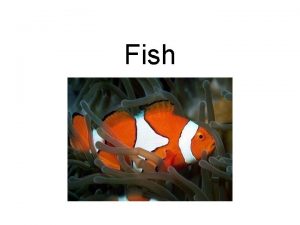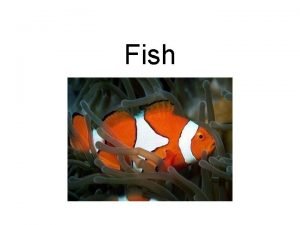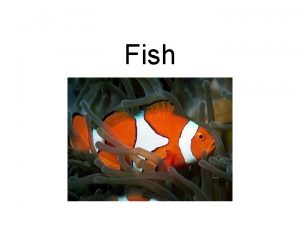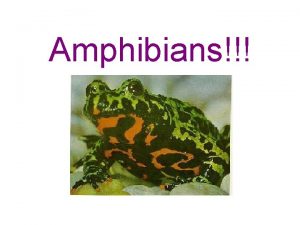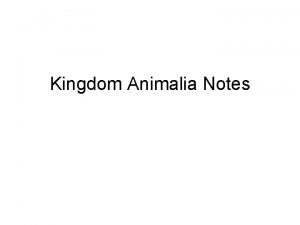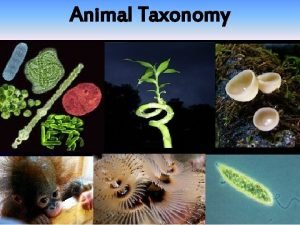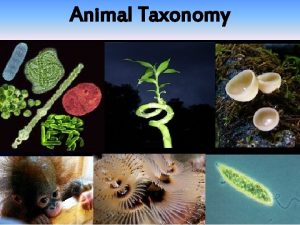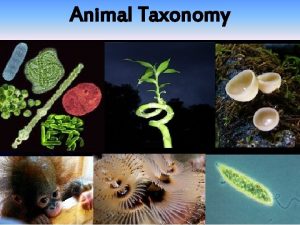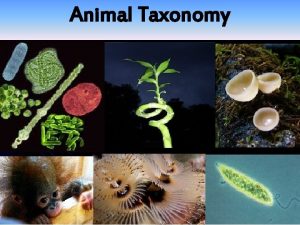Avian Taxonomy Kingdom Phylum Class Animalia Chordata Aves





















- Slides: 21

Avian Taxonomy Kingdom – Phylum – Class – Animalia Chordata Aves Avian Classification Mnemonic Create mnemonic for the taxonomic classification scheme (kingdom, phylum, class, order, family, genus, species) with ornithological theme. Killdeer Prance Carefully Over Fine Grained Sand Kingfisher Perching Cerulean Of Feathers Glimmering Summer Q. Luong ‘ 18 Page 1

• Orders: 40 • Families: >220 • Species 10, 500+ Taxonomy not rigid http: //www. worldbirdnames. org/

Avian biogeography http: //www. odsn. de/odsn/services/paleomap/animation. html

Avian Biogeography Wallace’s biogeographic realms: divided globe into major zoogeographic regions based on broad faunal patterns Alfred Russel Wallace

1. Oceania (130 sp. )

1. Oceania (130 sp. )

2. Nearctic (750 sp. )

2. Nearctic (750 sp. )

3. Australasian (900 sp. )

3. Australasian (900 sp. )

4. Indomalayan (2, 400 sp. )

4. Indomalayan (2, 400 sp. )

5. Palearctic (1, 025 sp. )

5. Palearctic (1, 025 sp. )

6. Afrotropical (2, 300 sp. ) Colwell et al. 2009 Fig. 5. Species richness for all 1599 species of birds endemic to Africa (lefthand map) and for 190 small-ranged (each occupying 10 or fewer 1 × 1 degree quadrats) local endemic bird species (right- hand map), which tend to occur along the periphery and in mountainous regions (data from Jetz et al. 2004)

6. Afrotropical (2, 300 sp. )

7. Neotropical (3, 700 sp) Hawkins et al. 2006

7. Neotropical (3, 700 sp)

Why do the Neotropics have so many species? 1300 http: //www. globalchange. umich. edu/globalchange 1/current/lectures/kling/rainforest/ rainforest. html

Why do the Neotropics have so many species? 1. Greater variety of foods 2. Greater range of prey sizes 3. Stable climate allows for more specialization 4. Greater structural habitat diversity many available niches! Right: Foraging guilds in temperate and tropical forests

Why do the Neotropics have so many species? 5. Large altitudinal range at tropical latitudes 6. Influx of migrants from Nearctic - 16 million mi 2 for breeding range (Nearctic) - 2 mi 2 in winter
 Phylum chordata mammalia
Phylum chordata mammalia Kingdom animalia phylum chordata
Kingdom animalia phylum chordata Kingdom animalia phylum chordata
Kingdom animalia phylum chordata Diptera
Diptera Animal kingdom phylum chordata
Animal kingdom phylum chordata Avian taxonomy
Avian taxonomy Avian taxonomy
Avian taxonomy Kingdom animalia phylum arthropoda
Kingdom animalia phylum arthropoda Cnidarian digestive system
Cnidarian digestive system Cnidaria characteristics
Cnidaria characteristics Phylum chordata class amphibia
Phylum chordata class amphibia Phylum chordata class reptilia
Phylum chordata class reptilia Phylum of shark
Phylum of shark Phylum chordata class amphibia
Phylum chordata class amphibia Reino cordado
Reino cordado Increngatura chordata
Increngatura chordata Old kingdom middle kingdom new kingdom
Old kingdom middle kingdom new kingdom Nnn ruled
Nnn ruled Old kingdom middle kingdom new kingdom
Old kingdom middle kingdom new kingdom Mentohotep
Mentohotep Chordata subphylum
Chordata subphylum Notochord in animals
Notochord in animals



